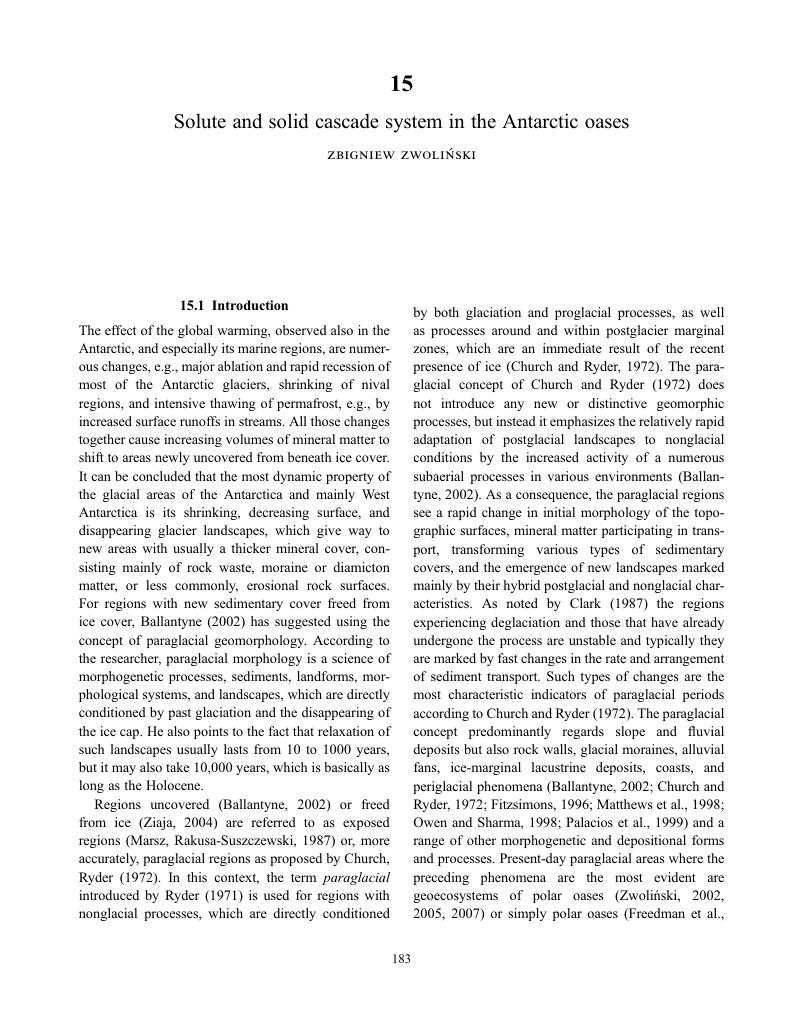Book contents
- Source-to-Sink Fluxes in Undisturbed Cold Environments
- Source-to-Sink Fluxes in Undisturbed Cold Environments
- Copyright page
- Contents
- Contributors
- Preface
- Part I Solute and sedimentary fluxes and budgets in changing cold climate environments
- Part II Climate change in cold environments and general implications for contemporary solute and sedimentary fluxes
- Part III Solute and sedimentary fluxes in subarctic and Arctic environments
- Part IV Solute and sedimentary fluxes in sub-Antarctic and Antarctic environments
- 14 Environmental impact on contemporary solute and sedimentary fluxes in Antarctica: current knowledge
- 15 Solute and solid cascade system in the Antarctic oases
- 16 Environmental controls on sediment composition and particle fluxes over the Antarctic continental shelf
- 17 Solute and sedimentary fluxes on King George Island
- 18 Dynamics of the Antarctica ice cap
- 19 Solute and sediment fluxes from rivers and streams in the McMurdo Dry Valleys, Antarctica
- Part V Solute and sedimentary fluxes in alpine/mountain environments
- Part VI Quantitative analysis of solute and sedimentary fluxes in cold climate environments
- Index
- References
15 - Solute and solid cascade system in the Antarctic oases
from Part IV - Solute and sedimentary fluxes in sub-Antarctic and Antarctic environments
Published online by Cambridge University Press: 05 July 2016
- Source-to-Sink Fluxes in Undisturbed Cold Environments
- Source-to-Sink Fluxes in Undisturbed Cold Environments
- Copyright page
- Contents
- Contributors
- Preface
- Part I Solute and sedimentary fluxes and budgets in changing cold climate environments
- Part II Climate change in cold environments and general implications for contemporary solute and sedimentary fluxes
- Part III Solute and sedimentary fluxes in subarctic and Arctic environments
- Part IV Solute and sedimentary fluxes in sub-Antarctic and Antarctic environments
- 14 Environmental impact on contemporary solute and sedimentary fluxes in Antarctica: current knowledge
- 15 Solute and solid cascade system in the Antarctic oases
- 16 Environmental controls on sediment composition and particle fluxes over the Antarctic continental shelf
- 17 Solute and sedimentary fluxes on King George Island
- 18 Dynamics of the Antarctica ice cap
- 19 Solute and sediment fluxes from rivers and streams in the McMurdo Dry Valleys, Antarctica
- Part V Solute and sedimentary fluxes in alpine/mountain environments
- Part VI Quantitative analysis of solute and sedimentary fluxes in cold climate environments
- Index
- References
Summary

- Type
- Chapter
- Information
- Source-to-Sink Fluxes in Undisturbed Cold Environments , pp. 183 - 198Publisher: Cambridge University PressPrint publication year: 2016
References
- 1
- Cited by



